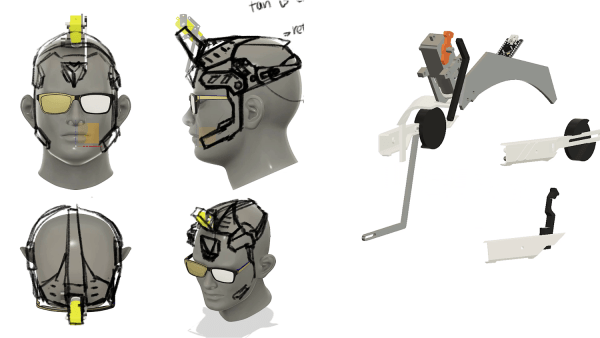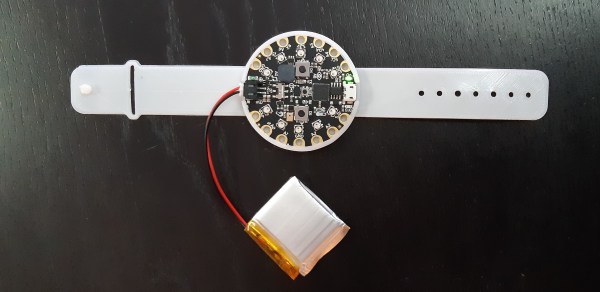We all have a habit or two that we’re not terribly proud of and have probably thought of any number of ways to help rid ourselves of them. Well, [Friedlc] wondered if he could create a mechanism that would get him to stop touching his face using a bit of negative conditioning. He rigged up a head brace that slaps his forehead whenever reaching for his face.
The first thing he needed to do was to detect a hand approaching his face. He decided to use a few cheap IR motion sensors he had laying around but noted they had a few limitations. He had a tough time tuning the sensitivity of the motion sensors to prevent false positives and they were completely useless in direct sunlight as the sun’s radiation saturated the photodetector. Despite these problems, [Friedlc] figured he would mostly need his device indoors so he stuck with the IR detectors.
For the “hitter” as he called it, he thought of a few different ideas. Maybe a rotating drum with a flap that would hit his hand or maybe a hitting arm on a bar linkage. He admitted that his rudimentary mechanical design knowledge made thinking of the perfect “hitter” a bit challenging, but like any good hacker, [Friedlc] just kept working at it. He decided on using a cam mechanism which allowed him to separate the motor from the hitting action. This choice actually put a lot less load on the motor which kept the motor from stalling and giving him other kinds of trouble.
[Friedlc] was pretty proud of his invention and noted that it really helped him stop touching his face as the successive strikes to the head were definitely quite a deterrent. This certainly isn’t the first time we’ve seen a Pavlovian Conditioning project on Hackaday. We could probably all use a bit of help curing a few bad habits. But maybe you prefer positive reinforcement instead.













